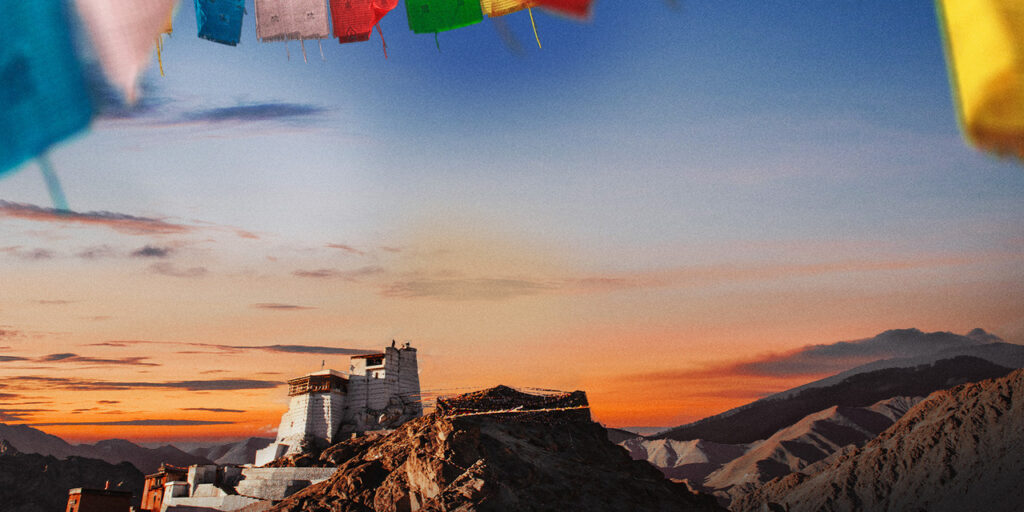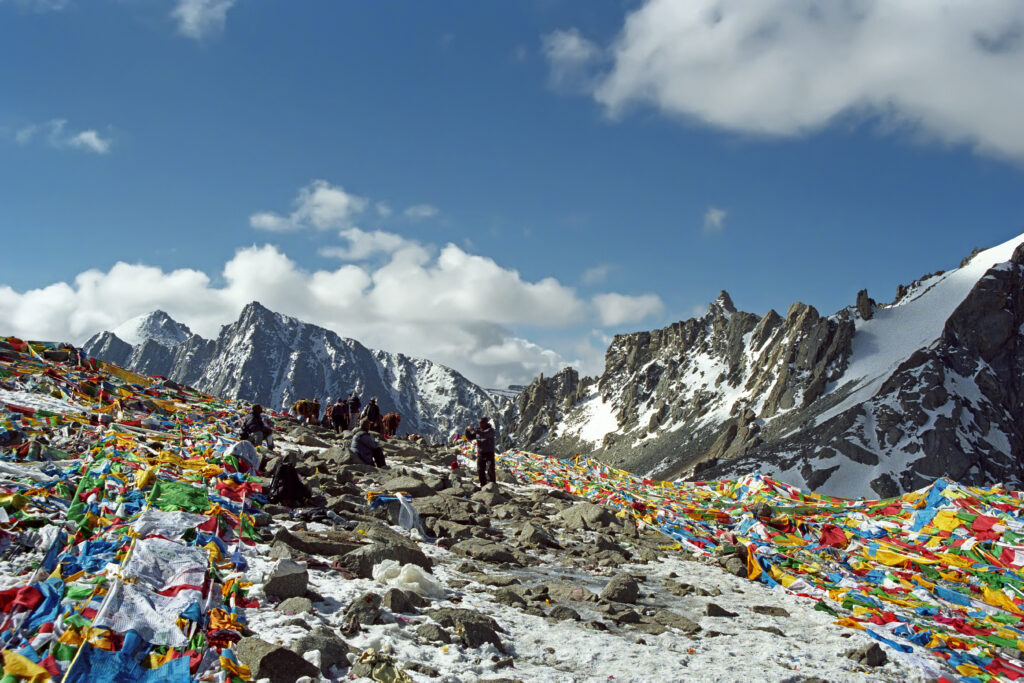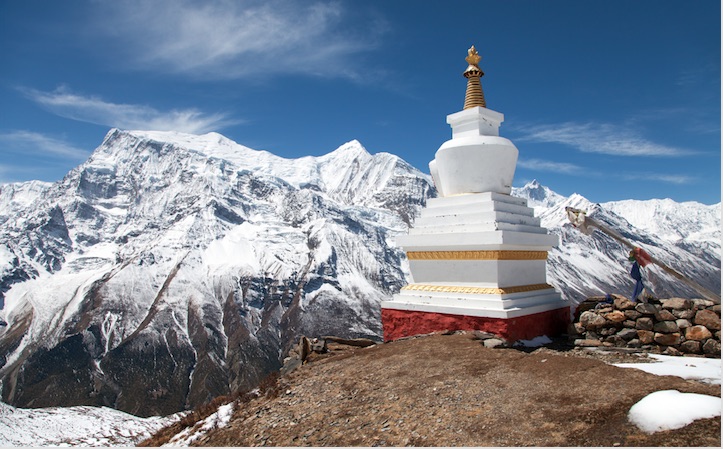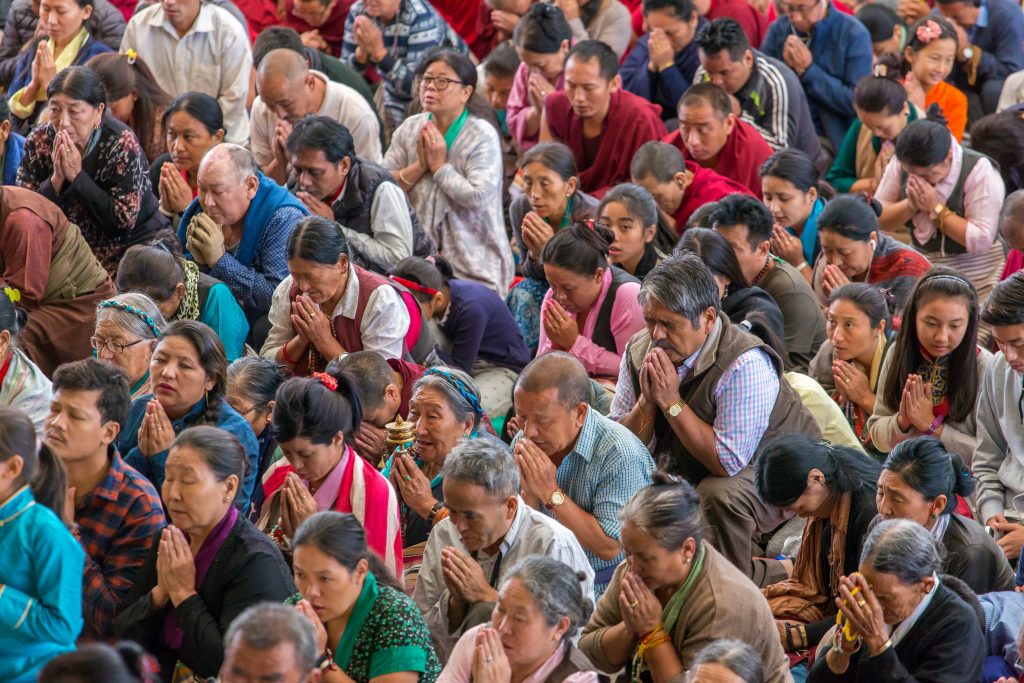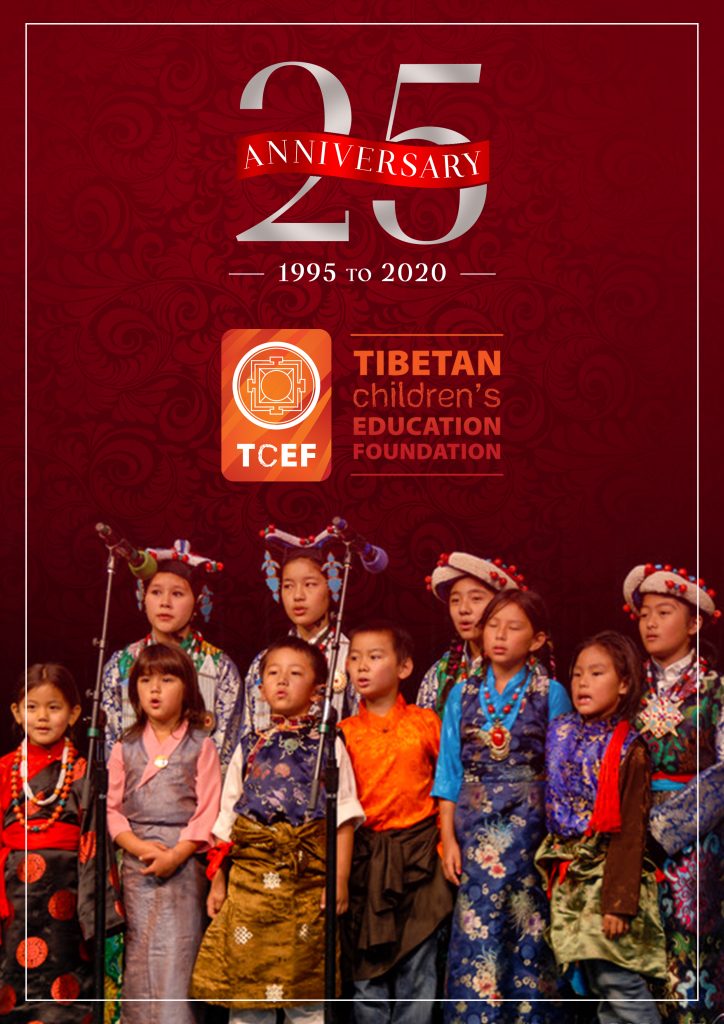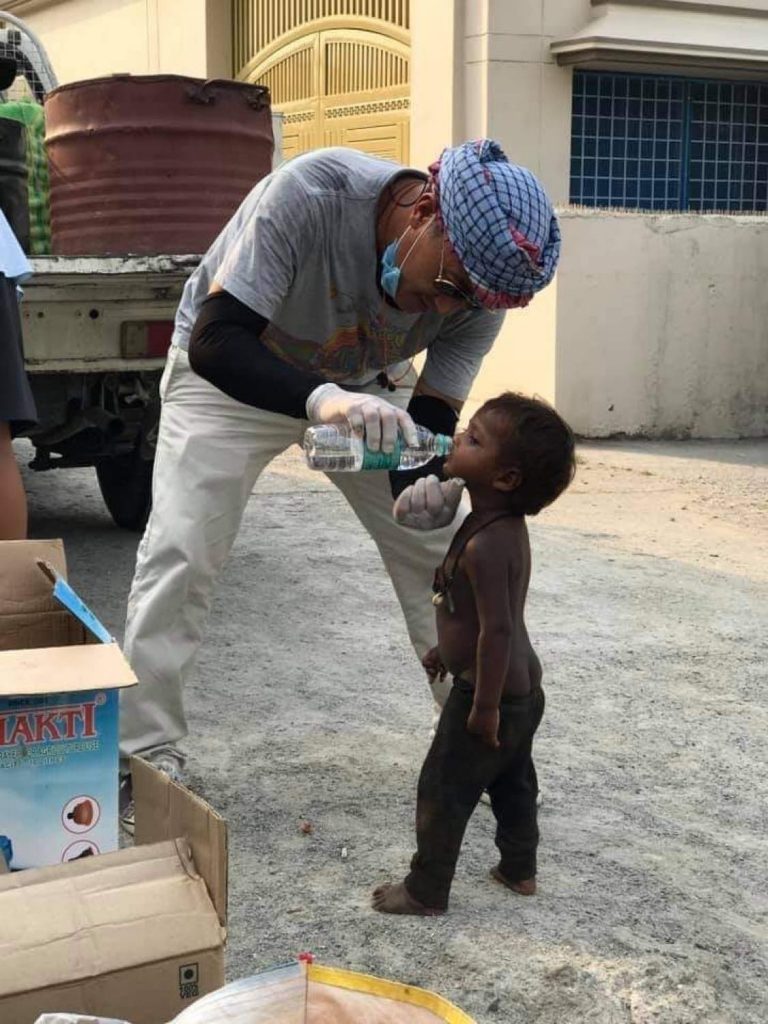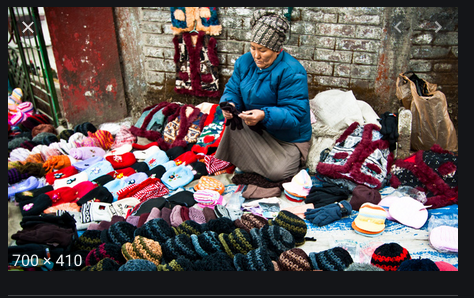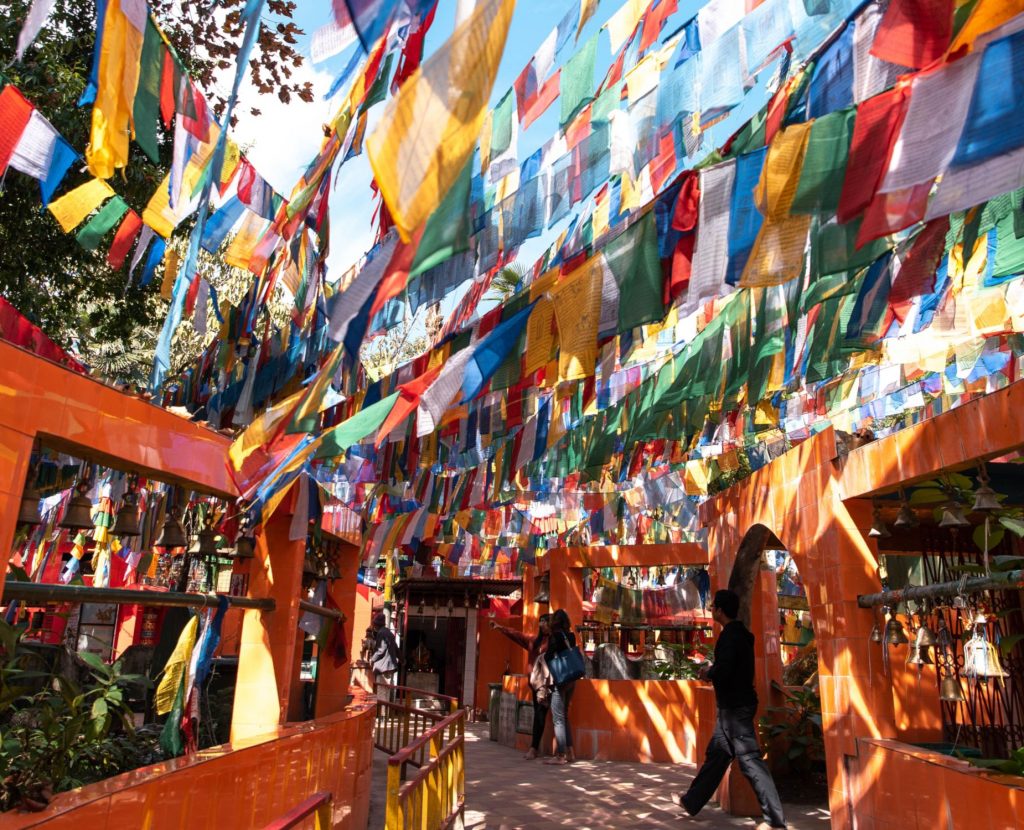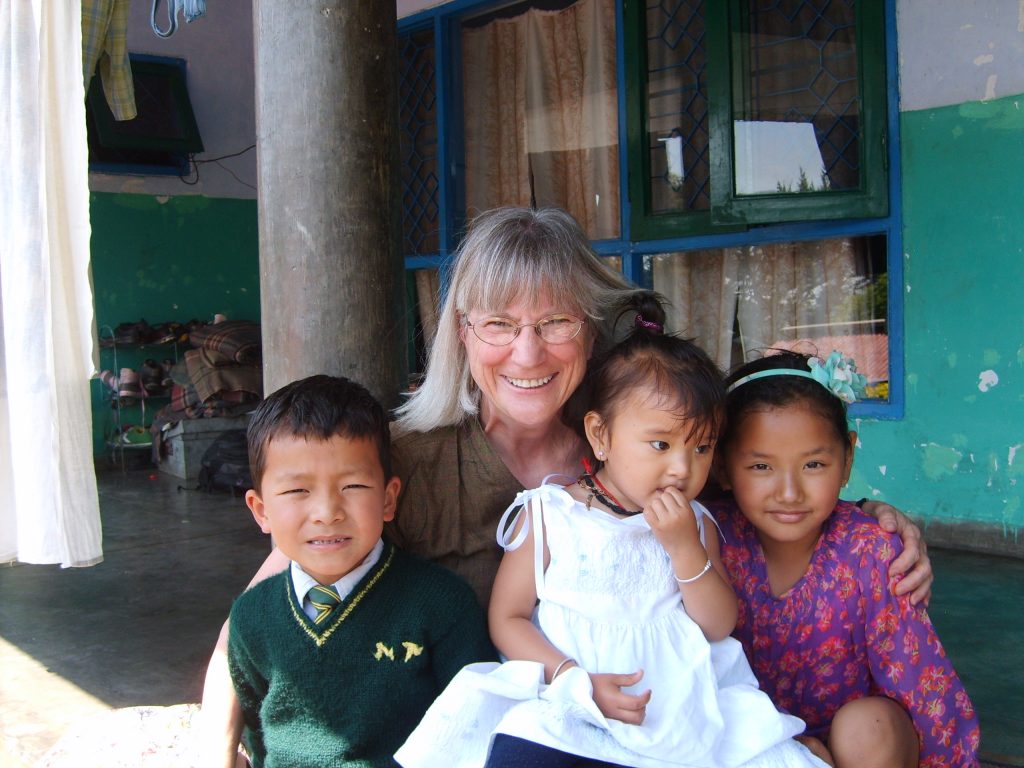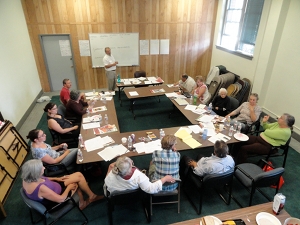TCEF Blog
Kadrin – Gratitude
As a Tibetan refugee, I’ve experienced a unique world. I’ve been thrown into the depths of poverty, yet life contrived to give me opportunities and a way to live in Montana, of all places. My life has been this fascinating blend of contradictions – being stateless for nearly sixty years, yet enjoying so many blessings. Thrust into exile as an infant by the Chinese occupation of Tibet; we begged our way through the lower Himalayan tribal belts till we found a semblance of haven at Dharamsala, Northern India, where HH The Dalai Lama had chosen for his headquarters. Growing up, I led this double life, where in the summers, I would be in this private school with tennis courts and a swimming pool, and I slept in between sheets. In the winters, I would be home with my parents – faced with the stark realities of extreme poverty. My sponsored education transformed my life and helped me to become a teacher. Life continued to be fulfilling but simple till I crossed paths with India Supera, started traveling with her, and started experiencing another world altogether. Aside from seeing life beyond my little school, I found myself in the environments of 5-star hotels. This connection to India would pave the way for me to come into this country and begin another chapter of unique experiences in this country. The sum of my varied life experiences, in a way, provides me with a unique perspective. Having experienced all the poverty and deprivations of life puts me in a place where I can truly appreciate all the blessings in life, where I can, from the center of my experiences, write this piece on gratitude and appreciation versus entitlement. Here are my top 5 picks to feel grateful for: 1. Water Over the past 18 years, like most Americans, I’ve had hot and cold water at the turn of my faucet. Yet, I remember growing up when hot water was a luxury we did not have. Things were so different. One incident still makes me blush with embarrassment: When we first arrived in Dharamsala as refugees, the children were sent to this one holding place – a temporary school, till the authorities found schools for us in different areas. I was six then, and I suspect I had eaten something terrible because I had a severe bout of diarrhea! One night I wet myself, and I was terrified. What if that very strict monitor found out? Worse still, what if one of the teachers found out? Shivering with fright and cold, my sister and I had to walk some twenty minutes to a nearby stream. That is how difficult access to water can be. We always hear of India being this sweltering place, which is true. But the winters, especially in the lower Himalayas, can be excruciatingly cold. Every morning millions of children brave the cold, wash and bathe in freezing cold tap water. If you’ve experienced that, as I have, every time the comfort of warm water touches the palm of your hands or your face, you feel a sense of gratitude. Water […]
Rediscovering My Tibet
This winter, I came across a Youtube feed with a charming young Tibetan man. What captured my initial interest was the confidence and even joy with which he introduced himself. But as I sat back to watch my new favorite YouTuber, he took me on a tour that started from Chengdu and drove right across Sichuan, or the erstwhile Tibetan province of Kham. He was enthusiastic about his videos, had a great team that captured the landscape and imagery in breathtaking high definition, and, frankly, it was beautiful. I had to flee Tibet when I was only a young child — with no real memories of Tibet. My father was a born storyteller who would regale me with stories of our nomadic clan. I would mentally paint images, and everything got blurred. I couldn’t tell if I remembered a landscape or remembered a mental image I had created or imagined after listening to one of my dad’s stories! Our young friend Jamyang Tsering and Youtube brought Tibet back to me in high definition! The landscape in Kham was pretty much as I always imagined it – breathtakingly beautiful, but not unlike Montana, where I’ve been privileged to live for all these years. What surprised me was the amount of development. That was an eye-opener. Bigger cities like Chamdo had paved streets lined with tall buildings, neon lights, night clubs and all the trappings of modernity! But more than anything else, the videos on Tibet drove home the incredible spiritual nature of the whole country. As our young YouTuber went across the expanse of Kham, mile after mile, in seemingly desolate places, there was always some spiritual imagery. Even after all the wanton destruction of monasteries and cultural relics during the Chinese cultural revolution, the whole of Tibet is filled with visuals of our spiritual heritage. At almost every town, big or small, the central showpiece seemed to be a monastery. And then, there were stupas – just an amazing number of them, some tall and splendid in isolation, others clustered or lined up to make a visual feast collectively. In Tibet, people carve sacred mantras or power syllables on stones and rocks. By far, the most popular mantra was Om Mani Padme Hum – the mantra of compassion, so I’m going to call these carvings Mani stones. I’ve known about them from a young age because my father did this. He would use a small chisel and hammer to carve out incredible mantras on stones and rocks of all shapes and sizes. But the vast dimensions of the rocks and the sheer volume of Mani stones just blew my mind. Much later in the video, I came across an interesting difference between my father and the modern-day Mani stone carvers – some of them were using modern drills! But, perhaps nothing dominated the visuals of the place like the prayer flags. They are simply everywhere – at the top of mountain passes, at every pilgrimage site, at every archway, in the remotest of places, on rooftops of home, in public squares. On some barren slopes, where there was nothing to […]
The Medicine of Altruism
Can a tweak in our attitude, the way we think and care about others make a fundamental difference in our happiness? The collective wisdom of the Tibetan spiritual tradition – the medicine of altruism strongly suggests that this is not only possible but within the grasp of each of us. An altruistic attitude is an antidote to the selfishness and greed that is the curse of our times. Individually, altruism can make each of us happier persons; collectively, it has the potential to change the world and leave it a much better place for our children. It was the summer of 2008, and we heard this fantastic news that HH The Dalai Lama was going to be in Seattle in connection with a series of talks and teachings around the central theme of Seeds of Compassion. One of his keynote addresses was arranged at the Quest Field. We arrived early and found our seats in one of the uppermost tiers. His Holiness and the stage were far away, but a giant projection system brought him closer to everyone. Up above, a small plane flew with a banner that read, “Dalai Lama Support the Olympics.” That was the Beijing Olympics year, and some Tibetan protests were highlighting human rights abuses and cultural genocide in Tibet. I remember being sad and incensed that people would use such a beautiful day and this teaching to make a political point. A small girl behind us pointed it to her mom, who quietly shushed the girl and told her to look instead at the stage. Soon His Holiness arrived, and the small plane went totally out of my consciousness. He proceeded to give an inspiring talk, and the part I remembered best and took home is his explanation of the difference between empathy and compassion. Empathy is when you feel something for a person or situation, that warm, good fuzzy feeling. Empathy is wonderful. Compassion is when you act and do something about the empathy you felt. Let’s say you saw someone in pain or discomfort, and you felt for that person and his pain. That is the empathy part. If you then almost assume some responsibility for that person’s distress and do something about it – now, that is compassion. In other words, compassion is empathy in action fueled by a sense of personal responsibility for someone else’s suffering! For me, this was a valuable lesson. While empathy is inherent, and I’ll briefly discuss that later, the acts of compassion and altruism are something that can be nurtured and cultivated, and therefore worth our reflection and effort, especially because the Tibetan spiritual belief teaches us that caring and loving others are the most humane and wise way to increase your own happiness! Speaking on the topic of The Medicine of Altruism, HH The Dalai Lama remarked, “In Tibet, we say that many illnesses can be cured by the one medicine of love and compassion. These qualities are the ultimate source of human happiness, and the need for them lies at the very core of our being…..” Biased and Unbiased CompassionIn his book Secular Ethics […]
The Pain & Privilege of Being Tibetan
Being a Tibetan in this day and age is both a pain and a privilege. The pain is more prominent – now, for over sixty years, we have been hounded from our homeland, driven into exile, stripped of our monasteries and even our dignity. We have no idea when even a beginning to resolving the Tibetan issue might occur. Therefore, we have no real hope that it will happen in our lifetime. Yet, among ourselves, we tell each other that we don’t even the right to lose hope, that somehow, we must preserve our culture and educate our children so that they, in turn, can have hope – hope for a culture if not a country! There was a fantastic stretch of ten years, during which I traveled the length and breadth of this country, doing well over a hundred presentations on Tibet, Tibetan culture, and children’s educational needs in exile. I’ve often been asked this question: what is it like to be a Tibetan, be stateless, or even what does it feel like to belong to something as special as HH The Dalai Lama? I’ve answered these and other questions as best as I could, sometimes at the end of presentations but also in snatches of casual conversations. This year, when travel and other events are not possible, I’ve been writing about Tibet, Tibetans, and our culture. This is by far the most relaxed space I’ve had to tell what it is truly like being a Tibetan. In my head, Tibet is a classic case of colonialism and repression. There are no grey areas – no conflicting claims from diverse ethnic groups over territory or resources, no dispute over a holy capital, no lingering historical conflicts to warrant occupation – but naked and sustained repression occurred simply because China could. Under Mao, they had the misguided zeal; the military and an international community almost complicit in this genocide through their deafening silence. I’ve always felt that it was poignantly sad that Tibet lost our air of freedom in the second half of the 20th century when the rest of the world was finally shaking off the shackles of colonization and breathing new airs of freedom. In our neighboring country of India, after being under the British Raj for close to two hundred years, the country under Mahatma Gandhi found a way to freedom. In Africa, after being partitioned by the industrialized European nations since the 15th century, the entire continent comprising over 50 countries became free and independent. After two gruesome and horrible world wars, the second half of the 20th century saw the world finally wake up, shake off colonization, embrace freedom for all countries and humanity. There was an atmosphere of hope, peace, and development. Hopefully, the world learned its lessons of wars and colonization. The United Nations Organization came into being. Tibet’s tragedy is that in this new atmosphere of global hope and freedom, we lost ours. Tibet’s tragedy is that China’s occupation went counter to the collective international thoughts and aspirations of that age. So yes, I’ve experienced this pain myself, of crossing the Himalayan […]
25th Anniversary Brochure
This brochure is a summary of everything TCEF. It provides an over view of our programs and achievements in our three key program areas of Culture, Education and Service over the past twenty five years. It also previews our hopes and aspiration in the years ahead. The gratitude segment informs of partner organizations we worked with in India, and organizations that greatly helped TCEF survive and grow. Through this segment, we are able to thank the hundreds of sponsors, event coordinators, donors and other volunteers to whom we are indebted.
The Tibetan Response to Covid 19 by Karma Tensum
The trend is the same – all over India, Tibetan communities are finding joy in giving back, in doing something for those who are more vulnerable and more in need than themselves. In 2019, the Tibetan community in exile coordinated a series of Thank You India events to express gratitude to the government and people of India for 50 years of support. There were gratitude speeches, cultural events, and other visible shows of appreciation. I believe that at a deeper and more meaningful level, the Tibetan response to the Covid 19 crisis has been an even more powerful way of showing our gratitude.
The Versatile Tibetan Sweater Sellers by Karma Tensum
Throughout history, the story of human survival through adaptation is fascinating and even inspiring. In its own way, so is the story of the Tibetans in exile. Did you know that most Tibetans in exile eke out livelihoods as roadside hawkers, selling sweaters, shawls, jackets, gift items, and other warm clothing items? This article on the Enterprising Tibetan Sweater Sellers is also the story of the Tibetans’ challenges and triumphs in India’s exile. I believe that to know the Tibetan sweater sellers is to understand the essence of the Tibetan people’s story in exile.
5 Lessons From the Tibetan Culture by Karma Tensum
Often I think of ways for us to give back to this amazing community of sponsors and supporters who donate hard-earned money to support a child or elder they’ve never met on the other side of the globe. I’ve always been passionate about sharing the Tibetan culture and nowadays my head is wrapped around trying to share aspects of Tibetan culture that have the potential to benefit others. Viewed from that lens, this is also an expression of my gratitude to everyone who supports our work.
My Journey with TCEF by Jane Amdahl
My journey with the Tibetan Children’s Education Foundation began in 2004. I had been saving up for years to take the trip of a lifetime and the time had finally come. After looking at my options, I decided to go to the most exotic and faraway place I could think of: Tibet. I signed up for a group tour and before I knew I was on my way.
The TCEF Story by Karma Tensum
The core of TCEF’s story is about the empathy that individual people in the West have for Tibet and Tibetans. One reason to share this story is that we are marking our 25th anniversary this year, but perhaps even more importantly, I wanted to share it for inspiration. I’ve been sad, other Tibetans have despaired that somehow the world has forgotten us, forgotten that we still exist tenuously as refugees in exile, that we are not receiving the attention that will bring our plight into global awareness. The immense love and support we’ve received from our founders, sponsors, and supporters are sources of inspiration. It conveys very clearly that, although governments may not care or have compulsions not to act, ordinary Americans do care – care enough to put their energy and money where their hearts are.

